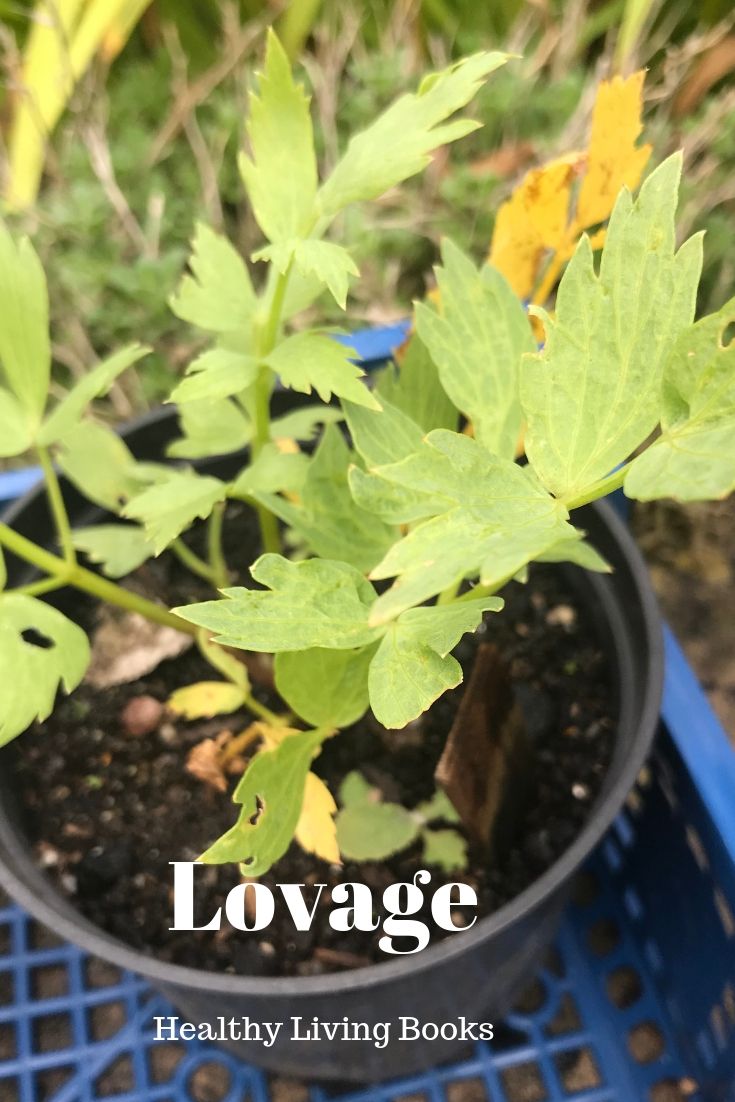
Now I have a garden again, I’m trying to get some herbs going. This lovage plant was donated by a lovely gardening friend.
Then the weather happened and I really thought I’d killed the poor plant, but here we are… looks like the birds may have had a bite or two but hopefully its hardiness will see it through…
I’ve vowed to be nicer to my plants from now on and watch out for crazy weather forecasts 🙂
About Lovage
Lovage is a hardy perennial plant and will last for many years given the right growing conditions. It will also grow anything from 3ft to 7ft (1-2m) tall, so needs to be placed at the back of a bed so as not to overshadow lower growing plants.
Lovage has a strong taste, similar to celery, and is often used as a substitute for celery salt. The seeds are ground to make salt, and the leaves are generally used for flavouring stews and soups.
The leaves can also be added to the salad bowl. Some cultures strip the bark off the plant and eat the stem raw as a vegetable, although generally the plant is used for its foliage and seed. Lovage has a high level of vitamin C.
Originally from Mediterranean areas lovage has adapted well to cooler climates. It grows well in the UK and other parts of Europe. It is associated with, and often used in place of, celery and parsley.
Medicinal uses for Lovage
Lovage has been used for many centuries in culinary and medicinal preparations and has been the main ingredient in many medicines. It was considered to be something of a wonder drug.
Lovage is known to stimulate the appetite, and aiding digestion. It was also added to baths at one time to deodorize and cleanse the skin.
Culpepper claimed that the powdered roots mulled in wine would “warm a cold stomach, helps digestion, and consumes all raw and superfluous moisture therein” (Culpeper, 1814).
In fact, lovage has been used for many ailments from sore feet to digestive complaints – google the medicinal qualities of lovage – you’ll be surprised why this ancient herb has fallen out of fashion in recent years.
Then, get some growing 🙂 A healthy plant, or maybe two, is probably all you’ll need unless you’re going into production. Start off a whole packet of seeds, re-pot when ready and spread the love!
As this is one of my favourite herbs I had to include it in one of my herb books, of course. Along with 19 others, 20 Everyday herbs is a must-have before you start your herb garden, even if you’re just growing a few herbs in pots.

20 everyday herbs
A potted history of twenty everyday herbs, step by step growing instructions, storing ideas and even medicinal uses.
Basil … Bay … Celery … Chives … Coriander … Dill … Fennel … Garlic … Horseradish … Lavender … Lemon Balm … Lovage … Marigold … Mint … Nasturtium … Oregano … Parsley … Rosemary … Sage … Thyme.
’20 Everyday Herbs’ is packed full of everything you need to know about how to grow herbs for everyday use. A must-have!
Choose from your favourite online bookstore:
Amazon (US) , Amazon (UK) , Barnes & Noble , Apple Books , Kobo , Etsy
Happy Gardening!
Linda x
thank you for teaching me something today. I have never heard of a lovage plant.
If I am remembering correct you have published some books. I have a post called ‘published?!’ and are asking people on WP to list any books they have written. In a few weeks i will then put another post together with a list of all the people and links to their works…….please feel free to if you would like to promote your book in this way.
LikeLike
Thank you so much for your message – I have 4 print books via regular publishing houses and over forty digitals that I’ve self published. Would love to promote with you – but not sure where to start with this lot!! Will check out your post now ….. 🙂
LikeLiked by 1 person
that is awesome. feel free to leave as much info as you would like! 🙂
LikeLiked by 1 person